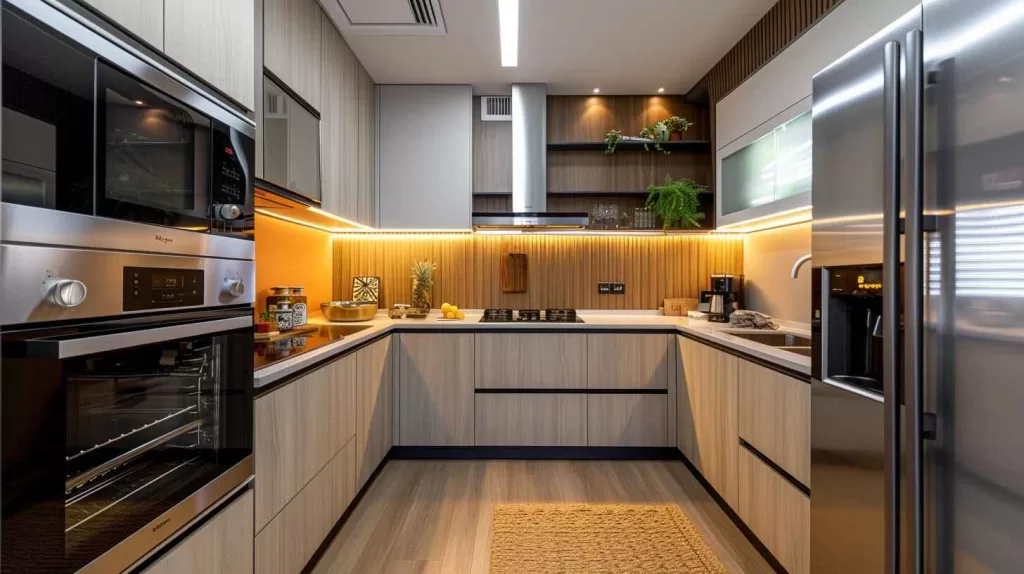
When selling a house, it’s customary to leave behind appliances like the fridge, oven, dishwasher, laundry machine, dryer, and microwave. Professional realtors say that these items can greatly influence a buyer’s decision and save time and expense. However, negotiable items such as the fridge, laundry machine, dryer, window treatments, light fixtures, and outdoor furniture may need open communication for a smooth changeover. Consider age, condition, and necessity when deciding which appliances to take. For a hassle-free appliance handover, create an inventory, clarify with the buyer, and maybe seek professional movers. Make the switch easier by leaving the right appliances behind.
When preparing to sell a house, it is advisable to contemplate leaving behind common appliances that can add value and appeal to potential buyers. The kitchen’s major ones—refrigerator, stove, and dishwasher—are often expected to remain. These items are essential for daily living and can greatly influence a buyer’s decision. Including these appliances can save buyers the time and expense of purchasing new ones, making the property more attractive and move-in ready.
Another common appliance worth considering leaving is the washing machine and dryer. Laundry facilities are necessary for most households, and having these appliances in place can be a convenience buyers appreciate. Furthermore, leaving behind a microwave can be a small touch that adds value. While not as crucial as other appliances, it can still enhance the kitchen’s functionality and overall appeal.
Certain appliances that could be negotiable when selling a house should be considered. While some appliances are commonly left behind, there are items that sellers may be willing to negotiate on depending on the buyer’s preferences. One key negotiable item is the refrigerator. While many sellers include the refrigerator in the sale, others may consider taking it with them, especially if it is a newer or high-end model. Buyers with specific refrigerator requirements may find it beneficial to negotiate whether the refrigerator stays or goes.
Another negotiable item is the washer and dryer. Some sellers leave these appliances as they are considered part of the home. Still, others may be open to negotiating if the buyer has their own set or prefers a different brand. Moreover, items like window treatments, light fixtures, and outdoor furniture could also be negotiable depending on the seller’s plans and the buyer’s needs. Both parties must communicate openly and consider each other’s preferences when negotiating these items during the house sale.
When selling a house, one must consider which appliances can be taken along to the new residence. While certain appliances, such as built-in ovens, stovetops, and dishwashers, are typically considered fixtures and should remain with the house, there are other appliances that you can choose to take with you when you move. Portable appliances such as refrigerators, washers, dryers, microwaves, and standalone freezers are generally considered personal property and can be taken by the seller.
Deciding which appliances to take with you should be based on factors like the age and condition of the appliance, its value, and how essential it is to your daily living. If the appliance is old and may need repairs soon, it might be more practical to leave it behind. On the other hand, if the appliance is relatively new or holds sentimental value, you may prefer to take it along. Choosing which appliances to take should align with your needs and plans for your new home.
To guarantee a seamless transfer of appliances when selling a house, careful planning and organization are essential. Start by creating an inventory of all the appliances included in the sale. Communicate with the buyer which appliances will stay and which ones will be taken. It is vital to consult with the buyer to make sure that the appliances being left behind are in good working condition and meet their expectations.
Arrange for a professional moving company to disconnect, uninstall, and transport the appliances if needed. Make sure to schedule the appliance transfer well in advance to avoid any last-minute delays. Clean the appliances thoroughly before the transfer to present them in the best possible condition to the new owner.
Lastly, document the condition of the appliances through photographs or written descriptions to avoid any disputes during the final walkthrough. By following these tips, you can ensure a smooth and hassle-free transfer of appliances when selling your house.
– What Happens If You Take a Loss On Selling Your House?
– Why Auction a House Instead Of Selling?